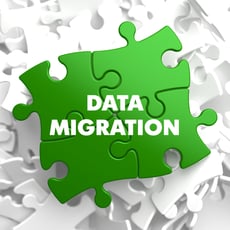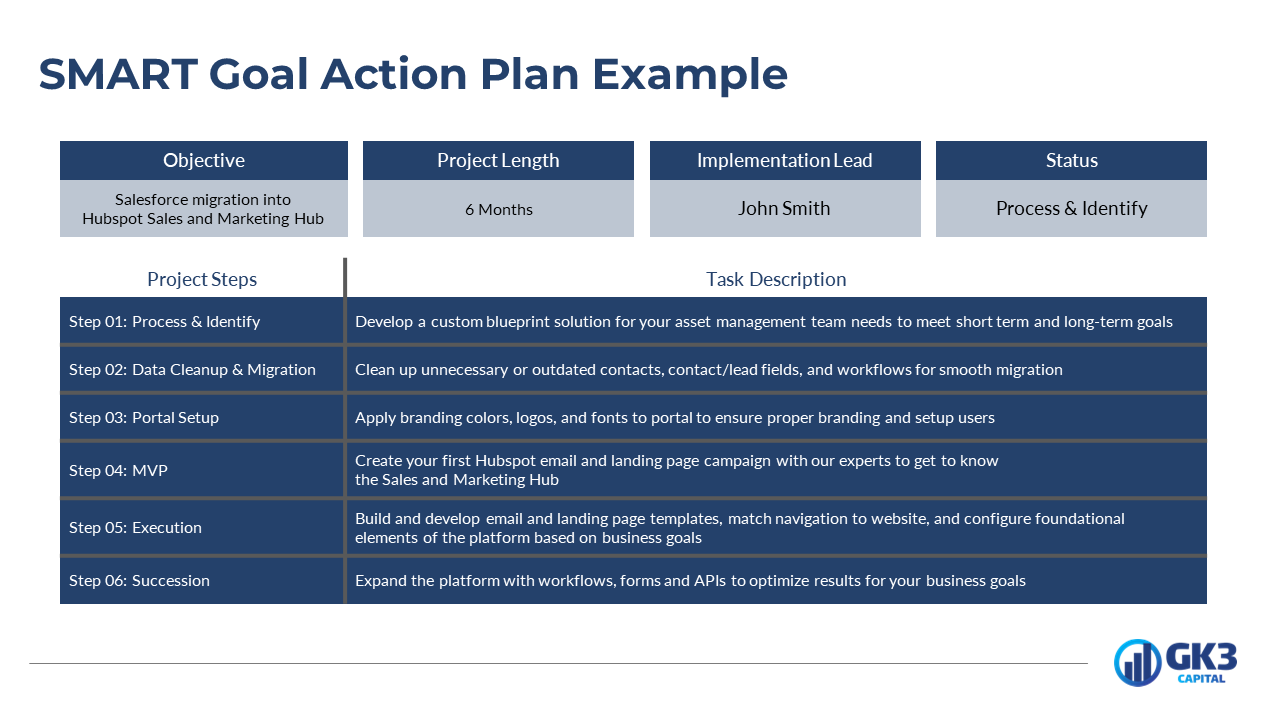

Migrating from Salesforce to HubSpot is easy, right? Just use the migration tool and authenticate, and everything is mapped over!
Actually, a lot more goes into migrating from Salesforce to HubSpot Sales and Marketing Hubs, especially when navigating custom fields or properties. If you talk to a Data Architect team or your CRM manager, you might give them heart palpitations just thinking about the amount of work required to prepare the data for migration.
The move to HubSpot can be challenging, but you can build a project plan to help ease the burden of making the switch with the right discovery questions. Let's walk through the steps it takes to make a move.
What is HubSpot, and Why is it Important?
Before we discuss migration, it might be helpful to have a brief overview of HubSpot. HubSpot is a software company that provides marketing, sales, and customer support solutions. It is best known for its inbound marketing and sales platform.
HubSpot's marketing tools help businesses find new customers, track their web traffic, create custom landing pages, and generate targeted email campaigns. HubSpot's CRM helps companies manage contacts and leads, while its Sales software helps them close deals and measure the success of their sales efforts.
HubSpot's integrated approach helps break down silos between marketing efforts and sales opportunities. A more integrated team can help your close more deals with a contextualized understanding of what the leads are doing in the marketing-to sales-funnel.
What would be required to implement HubSpot in your current Salesforce environment? First, you need to define and set goals for what you are looking to migrate into Salesforce and whether you still want to run Salesforce alongside HubSpot Marketing Hub.
Setting a Goal and Deadline for Migrating to HubSpot
A sound approach to ensuring the successful migration process is to develop a plan with clear goals and deadlines.
Develop your plan with the help of key stakeholders, including an IT consultant or a Marketing Technologist. These individuals have experience with technology migrations and can help address all the essential requirements of a migration.
What's the Average Time It Takes to Move to HubSpot?
The average HubSpot migration takes approximately 6-8 weeks to complete in an ideal world. However, 6-12 month migrations are not uncommon for more complex cases. Your timeline depends on three key factors:
1 - Your Data and Salesforce Environment
 The length of time and the number of discussions you will need to have with your sales and IT team depends on how your data is structured in Salesforce. For example, if you have custom fields and objects and a lot of data in those fields, the migration process will take longer.
The length of time and the number of discussions you will need to have with your sales and IT team depends on how your data is structured in Salesforce. For example, if you have custom fields and objects and a lot of data in those fields, the migration process will take longer.
HubSpot offers a free data migration tool that can help you easily move your data from Salesforce to HubSpot. The tool will automatically map and import your data. However, the accuracy of the data migration depends on the quality of your data.
If your data is well organized and follows a standard structure, the migration will be much quicker. You may want to work with an experienced HubSpot partner who can help prepare your data for migration.
2 - Development, Implementation, and Configuration
These three tasks involve moving your records from Salesforce into HubSpot and implementing new workflows. Therefore, they comprise a large portion of your migration timeline.
The amount of automation and workflows already created in Salesforce will determine the time required to recreate these in HubSpot. While HubSpot's free migration tool helps automate the property field data from Salesforce to HubSpot, it cannot move existing automation workflows.
Workflows need to be rebuilt by an IT consultant or Marketing Technologist. Again, the time devoted to discovery and the identification process at the beginning will determine how long the development and implementation phases will take.
3 - Training and Knowledge Affects the Timeline
The timeline and goals you establish are dependent on the level of knowledge your marketing and sales teams have with existing CRMs, and whether they know HubSpot. If your team has limited knowledge of HubSpot, you need to allocate plenty of time to train them on the software.
It is helpful to create a SMART goal-oriented action plan with a clearly-defined completion date. By identifying 6-10 action steps, you create a blueprint that all team members can follow and hold themselves accountable. For example, a good SMART goal for a six-month migration is shown here.

Determine Which Questions to Ask When Migrating to HubSpot
It is essential to know which questions you should ask your team members to help facilitate a successful migration from Salesforce to HubSpot.
Five areas to explore include
- General Questions (features and package-related questions)
- User Role-Related Questions (admin, roles, and functions)
- Marketing Preparation Questions (branding setup)
- Technical Infrastructure (subdomains, landing pages)
- Lead Scoring and RevOps (workflow, lead, and SQL process)
As you begin interviewing team members, you must access the historical data to ensure your questions are answered factually. If you don't have the necessary data or need assistance, you should consider engaging a HubSpot partner like GK3 Capital. We assist with every aspect of migration, from planning and strategy, through developing your new campaign infrastructure, to executing your campaigns the first few weeks after you go live.
General Questions
- What features are you currently utilizing in Salesforce that you want to ensure migrate into HubSpot?
- How many contacts do you plan to migrate?
- How do you plan to migrate your contacts? Will you use HubSpot's out-of-the-box tool or work with a HubSpot partner to move contacts?
- Have you completed a data cleanliness assessment to remove all unnecessary contacts?
Answers to these questions help determine what package you need for migration, and they help establish the time required to move your data from Salesforce to HubSpot. For example, if a data cleanliness assessment has not been completed, you'll need to allocate two to three weeks to address the topic.
User Role Related Questions
- How many users do you plan to incorporate into HubSpot?
- What are the user roles today in SalesForce?
- Who will be your assigned account admin?
- Will all your users be accessing HubSpot Marketing Hub and Sales Hub?
- Do you plan to move your entire sales team into HubSpot Sales Hub?
- How do you plan to record opportunities and deals?
- Will your sales team need access to more than one sales pipeline?
Take the time to be methodical about who is accessing your Salesforce CRM today and how they are using it. You want to consider what user permissions they have and what needs to be transferred to HubSpot. Also, consider whether your sales managers need permissions to adjust or change your sales pipeline or custom field properties.
Marketing Preparation Questions
- Is there a style kit with the necessary logos and brand colors for our developers?
- Is there a desired look and feel you would like to mirror within HubSpot?
- What are your preferences for your landing page design?
- Where will landing pages live once published in HubSpot?
You will want to engage your marketing department resources for this conversation to ensure a smooth migration to HubSpot Marketing Hub. Your marketing team can help you determine if there are existing assets to simplify the transition of market assets like color pallets, logos, fonts, etc.
Technical Infrastructure Questions
- Is there an assigned IT stakeholder to work with on domain and tracking code implementation?
- Do you have a planned subdomain for HubSpot landing pages?
- Will landing pages and any other marketing page developed in HubSpot be indexable?
- Do you plan to migrate any existing landing pages built in Salesforce over to HubSpot?
Schedule a meeting with key constituents from marketing, sales, and IT to ensure technical infrastructure is aligned with user needs and will facilitate a smooth transition.
Lead Scoring and RevOps Questions
- Do you have a defined lead and SQL process today within Salesforce?
- Do you utilize a lead scoring strategy today?
- Do you have a workflow or process to handle leads today?
Existing workflows and lead scoring structures within Salesforce will not automatically migrate to HubSpot. Audit your lead scoring practices and workflows now and then meet with your Marketing Technologist and your sales team to understand everything required to develop a qualified lead.
If your team doesn't have any lead scoring today, consider working with a consultant like GK3 Capital during the planning and migration process. We can share best industry practices and help you understand how to optimize leads in your pipeline.
Challenges to Consider in the Migration Process
Most teams face challenges when transitioning from Salesforce to HubSpot, as with any technology implementation. The following list is not exhaustive, but the challenges identified here are four of the most common.
Salesforce utilizes different naming for contacts/leads and contact fields.
In SalesForce, a contact is a person, while a lead is a potential customer. When you create a new contact in Salesforce, you create a new lead. In HubSpot, a contact is an individual and a lead is a stage within the Lifecycle stage. When creating a new contact in HubSpot, you are not creating a new lead.
The table below reflects how each platform uses a different language to describe the same element.
| HubSpot Object | SalesForce Object |
| Contacts | Leads |
| Contacts | Contacts |
| Companies | Accounts |
| Deals | Opportunities |
| Tickets | Cases |
You need to allocate time for a data cleanup process in your project plan. You can work with your team or a HubSpot partner who can help you map your contacts and leads into the HubSpot lifecycle funnel.
The word "campaign" means something different in SalesForce than in HubSpot
When working in Salesforce, a campaign is an organized way of targeting leads. You create a campaign when you want to track the progress of a lead through your sales funnel. A campaign can have multiple stages, and you can assign different leads to different stages.
In HubSpot, a campaign is a marketing initiative with a specific goal, such as increasing website traffic or generating more leads. HubSpot campaigns are typically comprised of a series of emails, ads, and other content designed to achieve a particular result.
A Salesforce campaign functions similarly to HubSpot's lifecycle and deal stages. Work with your IT consultant or Marketing Technologist to determine where your existing Salesforce campaigns fit into HubSpot.
Salesforce list migration and segmentation within HubSpot
Any segmented or dynamic lists you have developed will not carry over from Salesforce to HubSpot and must be re-created. However, you'll be able to import existing static lists so long as the properties match the appropriate fields.
In Salesforce, there's an option to create segmented lists to target specific prospects for email marketing. The setup is not quite the same in HubSpot. Instead, you create a dynamic list in HubSpot and set custom rules to get similar results. You must recreate dynamic lists manually, and it's recommended that you allocate enough time to do a thorough audit of the number of lists you've built in Salesforce.
Tracking Outlook/Gmail sales team emails within HubSpot Sales Hub
HubSpot Sales Hub allows you to build sales template emails and even set up automation to send emails on behalf of the assigned Contact Owner. You'll want to discuss with team members if this is something you want to set up when migrating to HubSpot, as it might entail additional technical setup during the migration process.
Summary
Migrating from Salesforce to HubSpot can be a sizable endeavor for any company. Therefore, you need to start with a thorough, well-designed plan jointly created by all the key constituents responsible for a successful migration. A SMART action-oriented plan with defined goals with targeted deadlines is an excellent place to begin. Download our free SalesForce to HubSpot Migration Plan today to help you on your journey.
Spend the necessary time to collect informed answers to questions to ensure you are thinking through the proper migration strategy. You may want to consider working directly with a HubSpot partner that has successfully helped clients of all sizes migrate, implement and execute Salesforce to HubSpot transitions. Request a free consultation with GK3 Capital if you would like to discuss your particular needs.
Jonah Wilson has a 7+ years of combined experience across sales, marketing and customer experience organizations. He is passionate about Hubspot and how to build workflow automation to increase sales and marketing enablement. As a Marketing Technologist with GK3 Capital, he assists with lead scoring, marketing automation and sales enablement efforts.
Topics:


